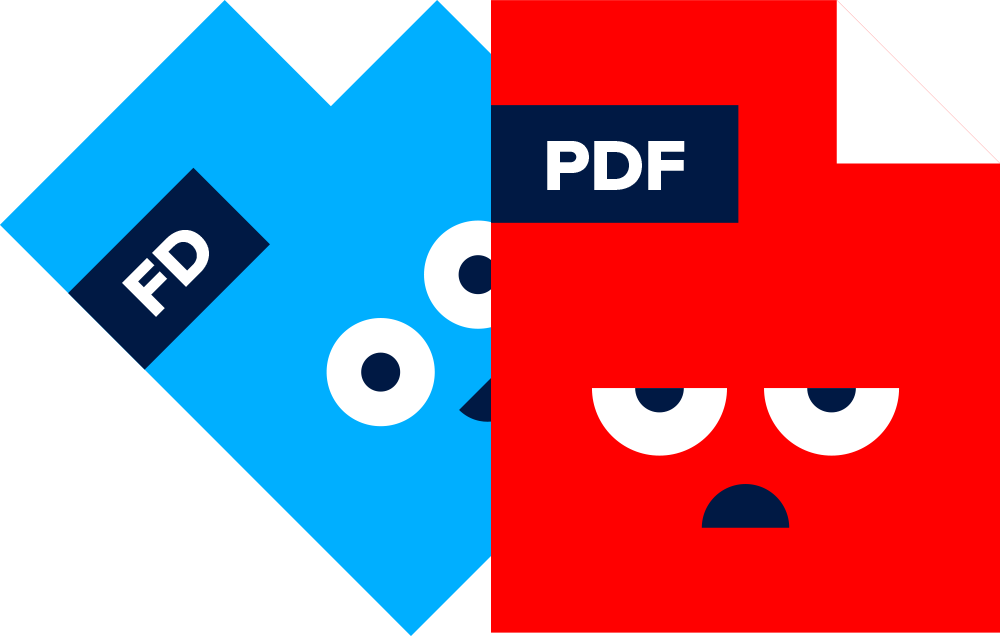Who else gets frustrated when you create a great piece of content only to sit and watch as nobody converts?
We've all experienced this at some point. While we can put this down to having bad copy on a landing page or something else, more often than not, it's because you haven't proven to your visitors that your content is worth them leaving their information.
Think about it. So many companies are creating content without much attention to detail or quality. Buyers have taken note and are approaching conversion forms with an increasing level of skepticism.
To gate or not to gate?
With more buyers suffering from form fatigue and conversion rates dropping, many of us in the Marketing world are faced with the dreaded question: To gate or not to gate?
The honest answer is... it depends.
For instance, if you're putting together original research or creating white papers with insights or thought leadership from sought-after authors, then there is a far greater chance that your visitors will fill out a form to access it (especially if they can't get that information elsewhere!).
On the other hand, if gated content is functioning as a bottleneck or a detraction to users, it might be best to reduce the number of form fields or to completely ungate the content.
Mid-gating content is also an option. There’s no demand for personal info without a glimpse into what readers will get in return. In this way, mid-gating encourages trust on both sides. Take a look at how we mid-gate here.
The cases for gating and ungating (and mid-gating) can go on and on. At Foleon, we've experimented with both. After moving from behind the form last year, we noticed a huge shift in the number of conversions we saw, the volume of opportunities, and greater engagement with our content.
Here's how we did it.
Our case for ungating
Until April 2021, most of our eBooks, white papers, and on-demand webinars were gated. While we saw a significant volume of visitors coming to our content, the conversions didn't match.
We knew our content had a much broader appeal and value than the numbers we were seeing. We create content that helps readers learn something new or useful, and clarify doubts they have on particular topics We knew a different approach was required to get our content seen by prospects.
We thought we'd get far greater traction if we ungated our premium content, hence better brand exposure for Foleon. Getting rid of forms would also mean more downloads, shares, and backlinks.
Also, since our own product is used to improve content experiences, we wanted to ensure that prospects had a seamless experience when engaging with our content.
We know that buyers prefer to do their research on their terms, without the fear they'll be bothered by a sales rep before they're ready to engage. That's why we let prospects call the shots.
They're much more likely to pull the trigger when they decide it's time to talk about buying. And they're more likely to determine your company is right for them if they seamlessly experience your content.
Ungating in stages & analyzing data
We kicked off our ungating initiative starting with our white papers and interactive reports and later tackling our webinar replays. These pieces of content represented the majority of all our gated assets.
We pursued the ungating process in stages, starting from April 2021 and continuing throughout the year, testing our assumptions and measuring results along the way to ensure we were meeting our goals.
To get meaningful data quickly, we used our product to gauge the success of our assets. We could see where engagement was highest and dropping off using our analytics.
For example, upon the release of our I'm a Foleon Doc, we noticed a drop in the number of people progressing from pages one to two. Our Growth team then ran experiments on the pages, tweaking text, CTAs, and inserting new graphics.
The more visual and interactive the content became, the greater the number of readers that progressed from pages one to two. We checked the analytics for weeks to see how things were going, and the results didn't disappoint.
Since kicking off our ungating strategy in April last year, our conversion rates have jumped, and we've seen 4x the volume of opportunities! What we learned from this process has affirmed our confidence in the value of ungating.
Earning the opportunity to engage with prospects
Of course, your decision to gate (or ungate) depends on the company and the structure you have. You could test out a gated asset, and if you aren't happy with the results you're seeing, you can always decide to publish it as an ungated post on your website.
For us, ungating is the right direction. If you decide to go down this path like us, remember to plan accordingly. Ungating isn't just about removing your sign-up forms. We believe in delivering value first to earn the opportunity to engage with prospects, providing a seamless experience for visitors, tracking what you can, capturing leads when possible, and syncing it all up in the relevant systems.



